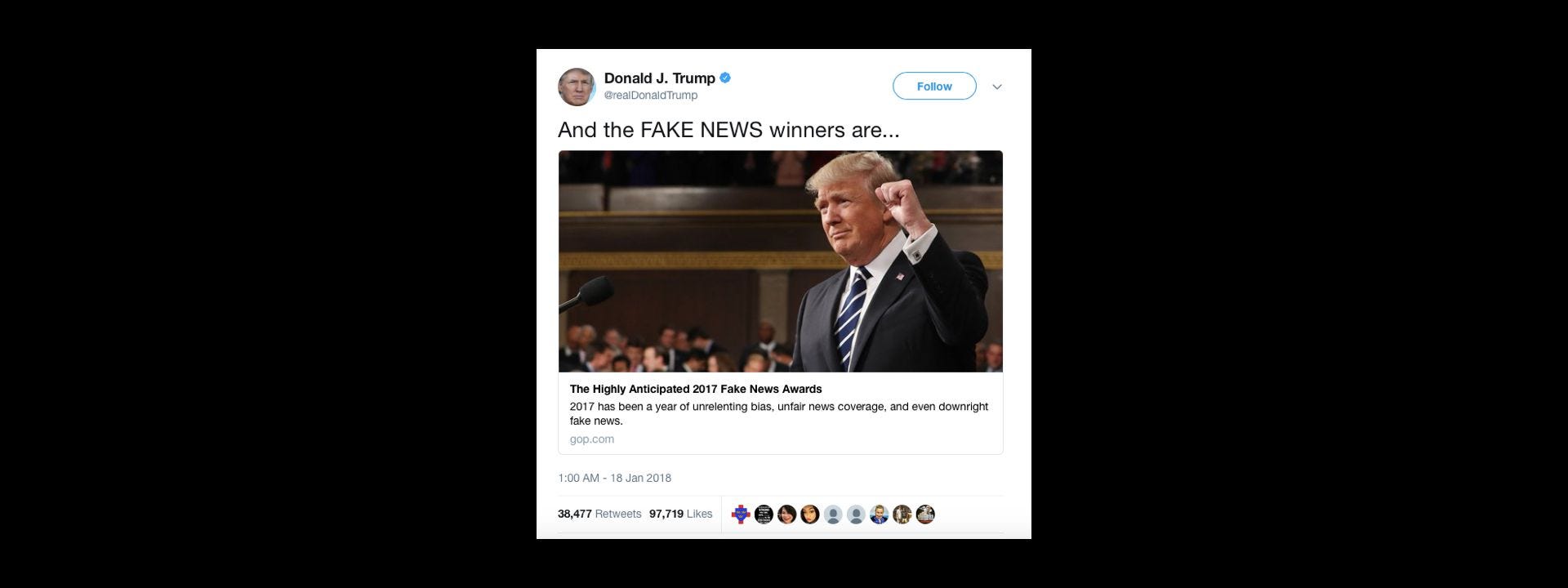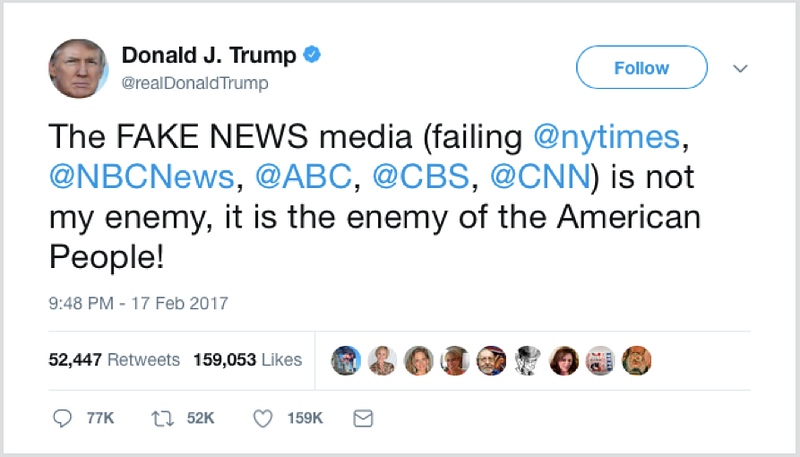Fake News: Defining and Defeating
Real techniques for identifying fake news and disinformation

Following U.S. President Donald Trump’s decision to present his media critics with so-called “fake news awards,” it is more important than ever to define what “fake news” actually is, and what it is not.
President Trump’s repeated accusations of fake news are dangerous both for journalists around the world, and for the integrity of free and fair democratic discourse in America.

Research by the Committee to Protect Journalists shows that “when public figures and political leaders lob insults at the media, they encourage self-censorship and expose journalists to unnecessary risk.”
Internationally, in the words of another pressure group which defends journalists, Reporters Without Borders, “Predators of press freedom have seized on the notion of ‘fake news’ to muzzle the media on the pretext of fighting false information.”
One of @DFRLab’s core functions is to identify, expose, and explain deliberate falsehood online, including what is often termed “fake news”.
We publish our methods, to demonstrate how deliberate falsehood, and deliberate mislabelling by authoritarian regimes, can actually be exposed. With transparent methods, we do not assume the credibility of our reporting; we prove it.
What is “fake news”?
There is no universally-accepted definition of “fake news.” BBC Media Editor Amol Rajan has identified three sorts of fake news. According to Huffington Post blogger Dr. John Johnson, there are five sorts. A list by Dr. Claire Wardle, research director of not-for-profit group First Draft and now of the Harvard Shorenstein Center, features seven sorts.
As a working definition, @DFRLab considers that fake news is “deliberately presenting false information as news.”
…click on the above link to read the rest of the article…